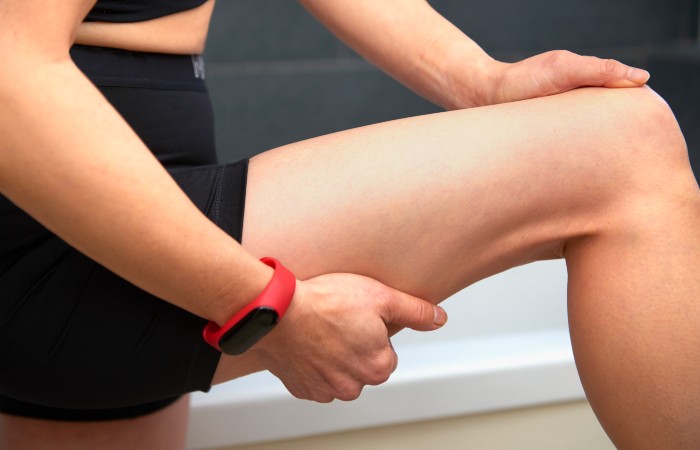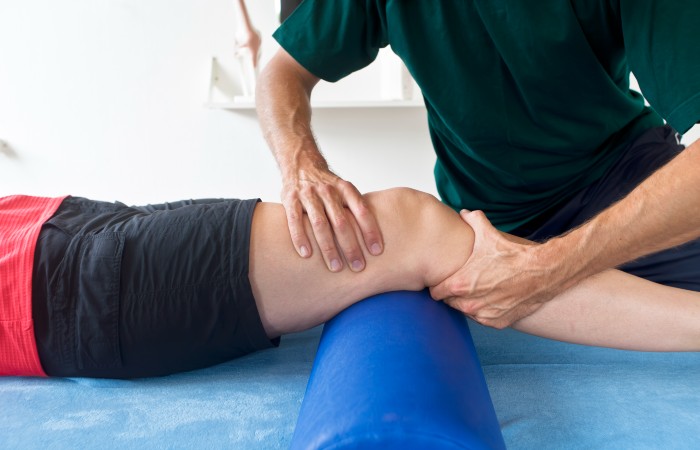

 By - Tabish Azim Functional Manual Therapist at VARDĀN |
|
Hamstring strains are both common and painful. They strike athletes of
all sorts - including runners, skaters, football, soccer, and basketball
players.
But what is a hamstring? It isn't actually a single ''string.'' It's a group of
three muscles that run along the back of your thigh. They allow you to
bend your leg at the knee.
A hamstring strain, sometimes called a pulled hamstring, happens when one or more of these muscles gets stretched too far and starts to tear one or more of these muscles. You're likely to get a hamstring strain during activities that involve a lot of running and jumping, or sudden stopping and starting. |
|
A hamstring strain generally occurs as a result of muscle overload, such as when you are running and your leg
is fully stretched out just before your foot strikes the ground. When your foot strikes the ground and all your
weight is on it, the muscles can get stretched too far and they may start to tear. People who take part in certain activities that involve sprinting or jumping (like track and field, soccer, football, lacrosse, basketball, and dance) are more at risk of getting hamstring strains. These kinds of injuries are also more common in teens who are going through growth spurts. That's because the leg bones may grow faster than a person's muscles, pulling the muscles tight and leaving them more susceptible to getting stretched too far. Some of the more common factors that can contribute to a hamstring strain include:
|
|
Mild hamstring strains may not hurt too much. But severe ones can be agonizing, making it
impossible to walk or even stand. Other possible symptoms of a hamstring strain are:
|
Keeping your muscles in good shape is the best way to prevent hamstring injuries. Here are some ways to help protect yourself against them (and other sports injuries!):
|
|

| FMTTM is a comprehensive system of evaluation and treatment through hands on techniques. This approach is based on three pillars: mechanical capacity, neuromuscular control & motor control. Our evaluation is focused on finding the root cause of pain and we rarely recommend for X-ray or MRI post evaluation. We treat the joint and muscles with hands on approach and then make sure we work on neuromuscular and motor control i.e reminding the brain of the efficient body position and movements. We educate the patient on exercises and offer postural advice specific to his/her body and ergonomic requirement, so that change we have obtained are maintained. In hamstring strain/pull, we can teach you the best way to accelerate, run and jump as well as correct ergonomics and body mechanics during high velocity activities, sports and fitness trainings, so that it does not feel or look robotic but comes naturally to you. It has been researched that if you move around or follow proper alignment and techniques during these activities, or during day-to-day activities or if you play a sport with proper alignment and technique, then the core stabilizing muscles of your upper and lower body segment will work efficiently, and significantly reduce the chances of injury and pain. |

| Our Client Speak
Recently, I injured my hamstring while playing cricket. My treatment at VARDĀN under my therapist Tabish Azim helped me not just recover but I was back to the field in very little time.
Functional Manual Therapy® really helped me cope with the pain and my therapist helped me in dealing with anxiety related to my injury.
Based on my experience, I would be happy to recommend Tabish to my friends and family.
|


|
VARDĀN is open for consultation & treatment sessions. You can book an appointment with our Functional Manual Therapist to avail our services. We are following stringent precautionary measures for your safety. To contact, you may call or mail us. |
Please call 011-43580720-22, 8:30 AM to 6:00 PM
Monday to Saturday
You may also contact our team on
+91-9971112446, +91-9910955500, +91-9810306730, +91-9910855500
Email: vardan@timesgroup.com | Web: www.vardan.in
Address: 16-A, Ring Road, Lajpat Nagar- IV, New Delhi 110024
A Functional Manual Therapist is also available in Gurugram & Noida
